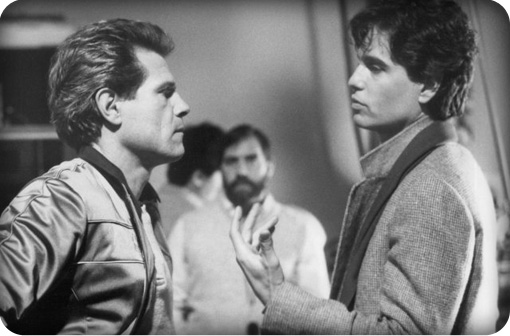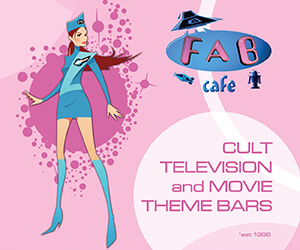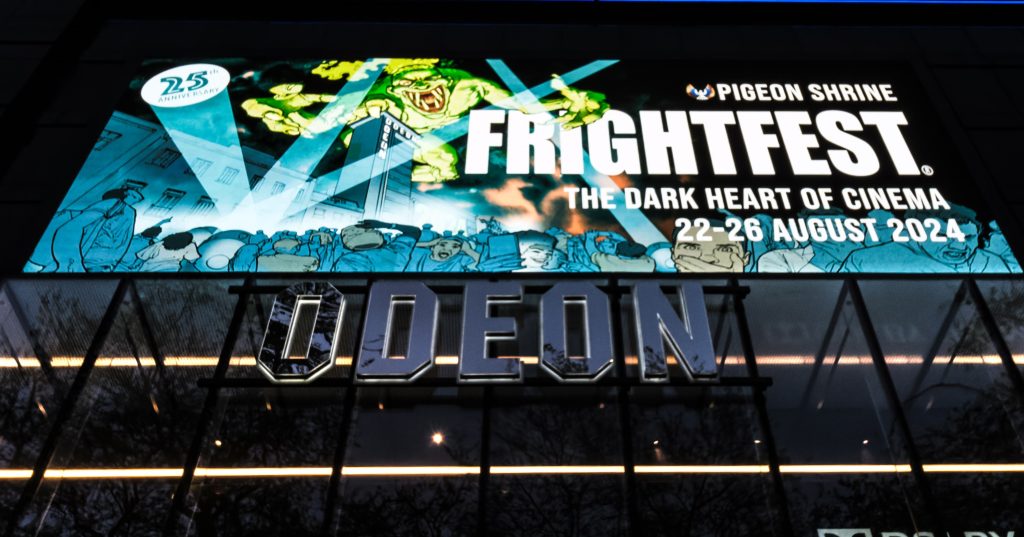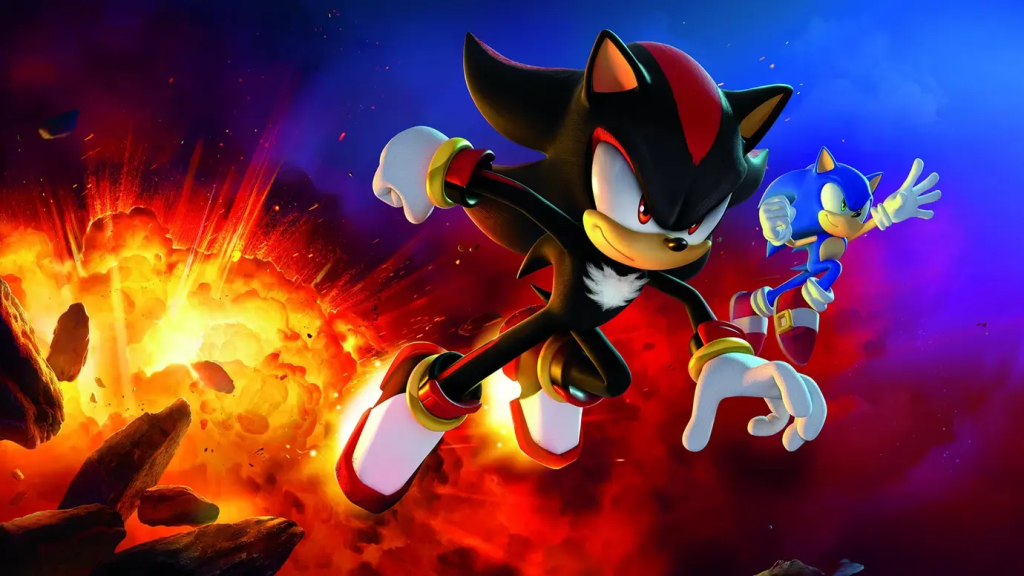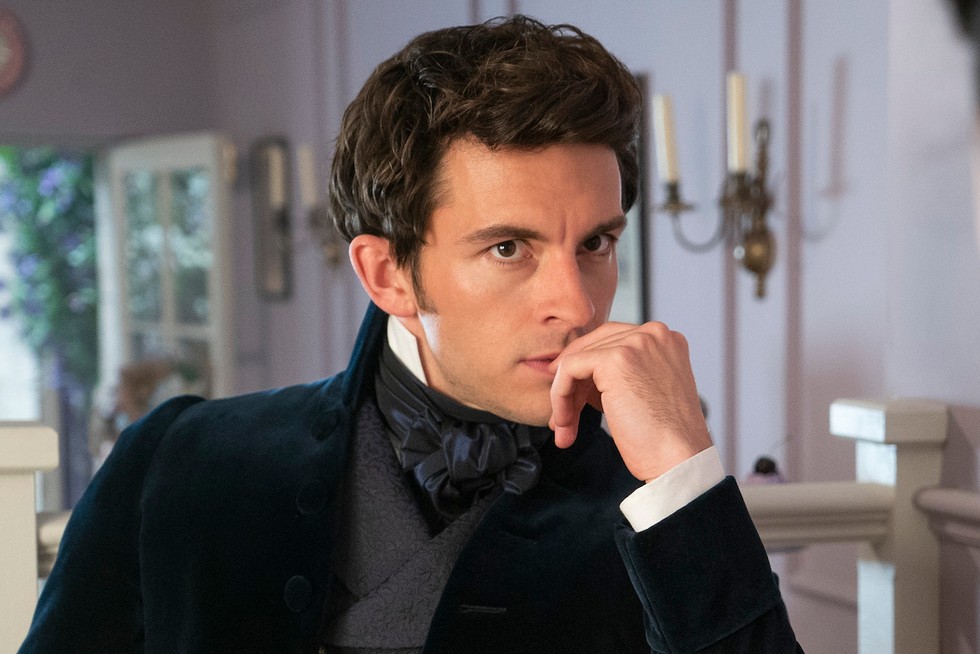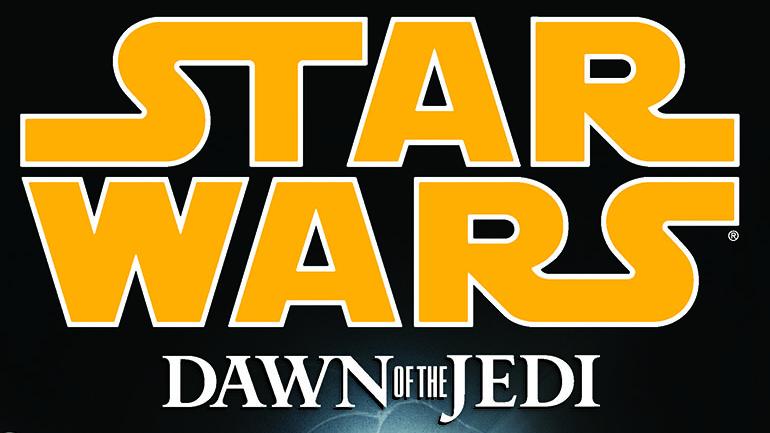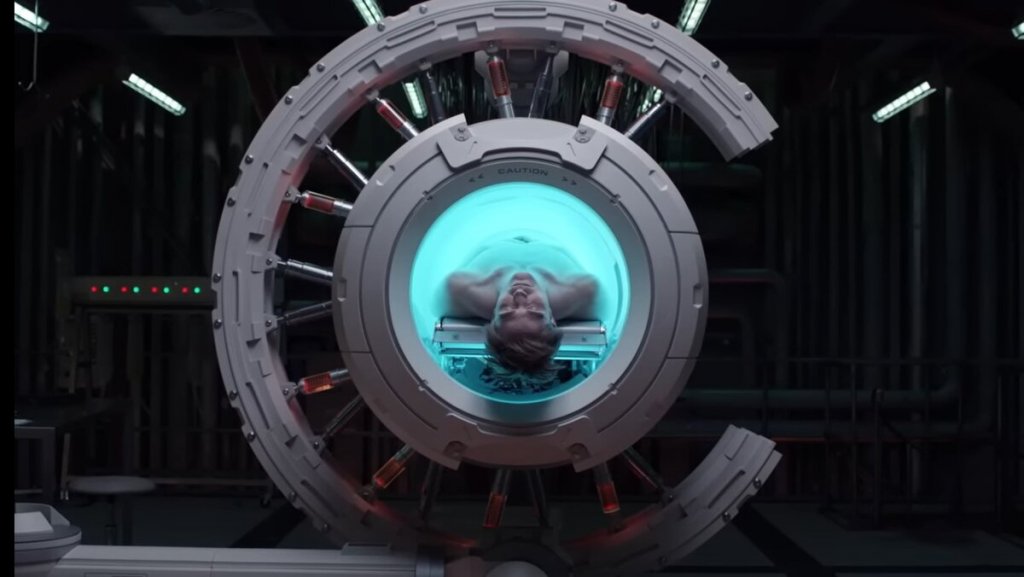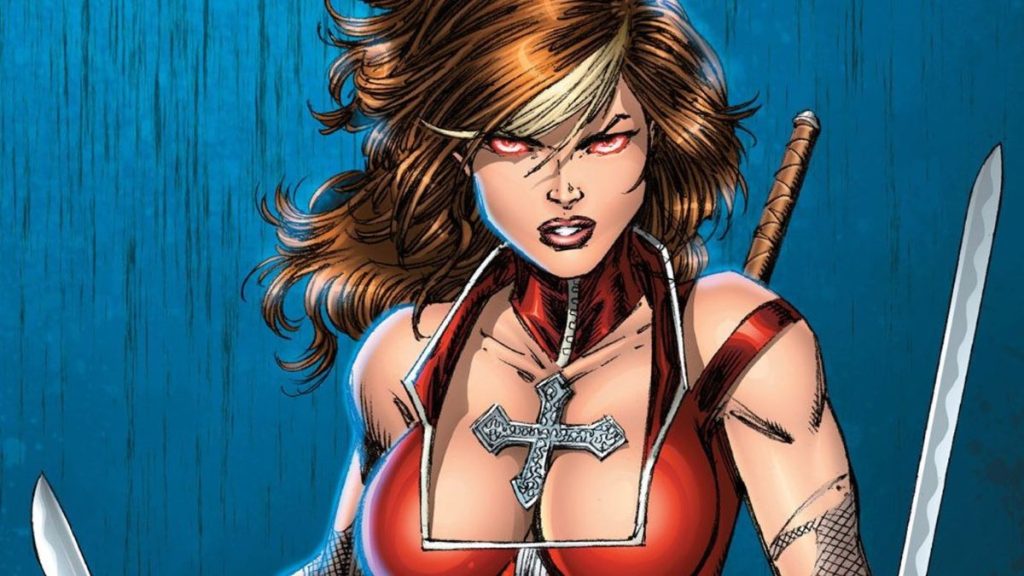Tom Holland has been a prominent figure in the horror movie genre since 1982, when he scripted The Beast Within. In 1983 he scripted the acclaimed follow up to the Alfred Hitchcock classic Psycho which revisited Norman Bates 20 years later. His place among the horror greats was assured in 1985 with his directorial debut Fright Night which went on to become a fan favourite along with 1988’s Child’s Play. Since then, he has carried on both writing and directing, adapting two of Stephen King’s stories for the screen. Tom recently took time out to talk to Starburst, reflecting on his career, and looking to the future of the horror movie industry.
Starburst: The first question is always going to be the obvious one – how did you get started in the business?
Tom Holland: I was an actor first, under the name of Tom Fielding. That was the a.k.a.
You worked on Bob Hope’s Chrysler Theatre, Combat, Felony Squad…
I did The Incredible Hulk, I guest starred in that with Bill Bixby, I think there I used the name Tom Lee Holland. I was in A Walk In The Spring Rain as Tom Fielding, that was a movie with Ingrid Bergman and Anthony Quinn in 1970. I was a soap opera star in the sixties out of New York City. So I was an actor, then I transitioned over to a writer, then from a writer to a writer/director.
The first work of yours I remember seeing, and it made quite an impression was Psycho 2 in the early eighties. Now Psycho 2 the film is a very different animal from the sequel novel written by Robert Bloch.
Oh God yeah! There’s no similarity between the movie Psycho 2 and the book.
I remember being confused by that at the time. They both appeared in the UK at around the same time.
I think the book sort of gave the impetus to making the movie. What happened was the book came out and the producer, Bernie Schwartz, now passed away, thought it was a good idea, and he optioned the book – but I’m not sure about that. Anyway when they calmed down and they read the book they realised it was impossible to make it as a movie but they had the idea by then. They needed to find a commercial story for the movie and they hired Richard Franklin the director, and then Richard Franklin hired me.
How did you feel about sequelising something as iconic as Alfred Hitchcock’s Psycho that early in your screenwriting career?
This was the second movie I’d written. The Beast Within was the first and that had not been a success and I didn’t work for an entire year. It had taken me five years to get to the point where I got a movie made with The Beast Within, which by the way I think is a very interesting movie for its time because it was a big effects movie. Now it looks very primitive, and you can certainly see the transformation aesthetic being born, so to speak, in terms of effects.
The Psycho 2 job was incredibly intimidating. We knew, Richard and I, that I was going to get killed by the critics, and so I probably worked harder on that script than I have on any other, to make it the logical successor to Mr Hitchcock’s Psycho. I really, really worked to make that the best movie I could because I just felt that critics were going to go in hating you for attempting to do it in the first place.
Did you work with Anthony Perkins on his dialogue? You seem to have hit exactly the same syntax that he had in the first movie.
I must’ve watched that first movie thirty times!
No, I didn’t work with Tony. The script is what got Tony to commit. Originally it was a cable movie. This was the early days when cable was just coming on. The studio, Universal, had no idea that they had anything that anybody would be interested in seeing. What happened then was that the script turned out to be (laughs) thank God, very good. Tony Perkins committed. The minute the media and the world heard that Tony Perkins had committed to do a sequel to Psycho, Universal was besieged with requests for interviews and for news about it. That was when Universal figured out they had a low cost feature film, as opposed to a cable movie. The backed in to it as a movie. They were almost forced in to it because of the fan interest. Even then, they did it incredibly cheaply.
That movie was made on the studio lot, I think we may have left once to get that shot of the burial in the graveyard. But other than that, 99.9% was shot on the back lot at Universal as was Mr Hitchcock’s original. The entire cost without the studio overhead was 3.8 million dollars.
When you think about it, they didn’t even pay to design a new house. They just went and pulled Henry Bumstead’s drawings of the original Psycho house, and we recreated it and we shot it. It was the same design that Mr Hitchcock had for the first one.
It was an amazing congruence of circumstances that made the film possible. The studio was paying no attention at all and was in a state of befuddlement that it was attracting all this interest, and they never bothered us. They left us alone and we shot the movie.
The only thing I did for Tony, when we were in production, is Tony wanted a scene that showed character, that showed how nice he was (laughs) and I wrote the toasted cheese sandwich scene for him. It took place in his room with Meg Tilley. I wrote that in the early part of production. Otherwise, the script was what it was, the way I wrote it before he even joined.
Fright Night is one of those iconic eighties movies that was way ahead of its time. What you did was you paid homage to the vampire movie lore, and you also made a self aware horror movie over a decade before the same idea occurred to Wes Craven with Scream. The protagonists in Fright Night know what they’re dealing with because they’ve watched the movies. The Peter Vincent character is a total fraud because he’s working from his experiences as a horror movie actor, how did you get that idea?
I grew up watching the American International (AIP) horror movies with Vincent Price, and the Hammer horror films and that is my loving homage to Hammer and AIP. Peter Vincent is named after Peter Cushing and Vincent Price. It was my memory of growing up being a horror fan, because in the United States, back in the sixties, pretty much the only place you could find horror was on the independent local TV stations. On Friday night, they would run something called The Friday Night Frights and they would start them at 11:00 at night. A lot of them had different local horror hosts. You’d have Zacherley coming out of a coffin or Vampira in a fog filled set. You’d have these men and women who were terribly hokey and comical. They had no money because it was the local stations. They’d throw up a black flat behind the host and they’d pontificate in Frankenstein type voices and I felt a great deal of affection for them. They’d have these God-awful horror films, and in-between the terrible stuff would be the Hammer and the AIP stuff.
That’s what’s so amazing about Psycho by the way, it was the progenitor of the modern horror movie.
It’s the first slasher movie isn’t it?
Oh boy, it’s the first one! Such elegance, such brilliance. Look at the complexity compared to Halloween for instance. Halloween was in your face, but Psycho took montage and it elevated it in to an art form in the service of suspense and terror. Hitchcock was a true genius. I think John Carpenter’s really talented – but Hitchcock’s a genius. I think even John would say that. But I don’t know (laughs).
But anyway, I’m off track – what was the question?
I think you’ve answered it. We were talking about Fright Night.
Fright Night, yes. What we’re talking about is called post modernism now, which is self reverential. I would suggest – I might be wrong, but I would suggest that that wasn’t so much Wes, as it was the screenwriter, Kevin Williamson. I don’t know him, I’ve never met him. So Fright Night was self aware. It stays within the situation, it never breaks the fourth wall and winks at the audience.
Scream takes it to a new level of self awareness. Post modernism/irony. I think that got tired. Not that I don’t think that Scream is brilliant, because I do. But now, we’ve had so many “nudge, nudge, wink, wink” films it pulls the viewer out of the dramatic situation in the film and it mitigates terror and it leads to comedy mixed with horror which is what you see predominating now. Once again, I’m not criticising because these people are friends, but you end up getting Hatchet. You end up getting comedy horror. That’s because people have lost the ability to scare the audience and that inevitable leads to farce. Farce is the exclamation point and the exhaustion of the genre.
In the same way Universal killed off their classic monster franchise of the thirties and forties by teaming them with Abbott and Costello.
In the late seventies, it happened with Love at First Bite with George Hamilton as Dracula. It absolutely finished off the vampire genre, until 1984 when Fright Night came out, which resuscitated it. When I made Fright Night nobody was making vampire films any more because they had become objects of derision. They were farce.
It’s like the last couple of episodes of Chucky. The doll has gone into camp and farce. When you do that, it’s because you have become self conscious. You can’t scare the audience any more. So they have to take a time out to the killer doll genre. I think it’s a cycle that you see with so many of the genres…. horror genres especially.
The genre changes and it reinvents itself again.
It always does.
Would you say that Child’s Play is the film that most people will remember you for?
Actually, Fright Night seems to be growing by leaps and bounds. We had a midnight screening (in 2008) – Tim Sullivan organised it. And brownie points in heaven for Tim, he and a guy named Jack Morrisey organised it at the New Art Theatre here in L.A. and it was sold out almost a week in advance. We got some of the members of the cast back together again, the editor, and Randy Cook, one of the effects guys. It was an interesting group. Randy ended up being the three time Academy Award winner for Lord of the Rings. He and Steve Johnson were the two effects guys on Fright Night so you see people’s careers progressing.
Anyway, we had this midnight screening at the New Art, and it was like the 24th anniversary or something like that, but there was just this huge amount of publicity and it was picked up by all the horror sites. It seems to me there’s more interest in Fright Night than in Child’s Play.
I think that’s because apart from one, way back when, Fright Night hadn’t been sequelised, whereas Child’s Play feels current because the sequels have kept coming over the 20 years. Child’s Play doesn’t feel like something from the eighties, it feels like something current even though there’s such little similarity between the let’s say, last sequel, and the first one that kicked the series off, which I did.
Back on Fright Night – the character that everybody remembers is “Evil Ed”.
(Laughs) Yes… everybody remembers Evil Ed. Tip of the hat to the actor Stephen Geoffreys who did a brilliant job.
Was the character based on somebody that you knew ?
(Laughs) He was based on every horror fan that I ever went to high school with. Listen, Charlie Brewster was me. Evil Ed was all my weird friends. If you were into horror back in those days, oh boy… “something was a little wrong with you”, you know what I mean?
I think you got the best performance out of Roddy McDowall in the latter part of his career in that film. In fact, I’d say that’s the best performance by Roddy McDowall outside of chimp make-up, if I’m honest.
I can’t remember now, but I wrote Class of 84 and he starred in that too. I remember him being very moving in that, but to be honest with you, I haven’t seen it in a long time. I could go on and on about Roddy. His passing was a terrible loss to the film community. Roddy was a walking, living history of Hollywood. Roddy did so much to help me as the first time director of Fright Night, he just loved film. He had the biggest collection of 16mm prints of anybody in town. Whenever I wanted to see a film and I couldn’t get a print of it, I went to Roddy and Roddy would run me a dub out of his personal collection. It was an absolutely astounding collection.
He also was friends with everybody. Every major actor. And he went back and maintained friendships, even go out to the Motion Picture Home and visit with the silent motion picture stars that even at that time, had been forgotten. He walked me around MGM, which is now Sony, telling me where this or that famous moment happened. He pointed out to me where Katherine Hepburn met Spencer Tracey. He was amazing, he’s been a child actor, he’d been through the creation of the studio system. He was just an amazing reservoir of knowledge. If you were a film fan hanging out with Roddy McDowall, it was the ultimate pleasure because he could talk about it so knowledgeably because he’d been there and knew it. He was a living, walking history of Hollywood and film.
If he liked you, and thank God, he liked me, he was very supportive. You’ve got to remember this film was my first directorial effort, and the fact that he took me seriously – he made so much possible for me. He and Chris Sarandon. Chris should not be forgotten either. He’s an extraordinary actor.
Chris Sarandon came back to work with you again on Child’s Play didn’t he?
Yes, and we also worked together again on a movie of the week called The Stranger Within starring Ricky Schroeder, which I directed. It got Ricky a Golden Globe nomination. The problem with television is that nobody remembers it.
Yeah – it’s disposable entertainment
The way things are going, I’m not sure that anybody’s going to remember movies either.
I’m sure we will.
Think so? God, the business is going through such massive changes the ceiling is there.
How difficult was it to get Child’s Play made?
Child’s Play wasn’t difficult at all.
From a technical point of view? Put another way, if you were making Child’s Play today and I believe somebody or other is, then probably Chucky would be all CGI. But CGI didn’t exist back then. How did you accomplish what you did? Were some of the dolls mechanical? Did you have short people in a Chucky suit and a mask?
Oh boy, this is a discussion in itself. It was a huge job. It was all animatronic, there were multiple dolls with multiple heads with different expressions. Pieces of the face were moveable. We had eleven puppeteers off camera operating the doll. Even then, it was almost impossible to make the doll work in a believable way. Things like tensile strength. It couldn’t really grip the knife. We had to do an aluminium foil cutout.
I used a little person for a lot of it, named Ed Gale, who did a brilliant job. I built sets that were big, but in scale. Or I shot down on the little person, so you didn’t have anything that referenced his size. I have a pirate commentary that I put up on the Icons of Fright web site. Tim Sullivan set it up, and he and I sat, with Chris Sarandon, and we did this commentary that’s up on the website (and iTunes), for Child’s Play. We did this outside of the 20th anniversary edition of the DVD. It’s not on the DVD. It’s probably the best commentary I have ever done. None of it is fluff, I went shot by shot describing how I had done the illusion of making you think that the doll was for real. It had been so long that even I was surprised by how much I’d used the little person.
I remembered that when the babysitter’s sitting there reading the book, the first murder, the act one break, and all of a sudden you see the doll run out of focus behind her across the archway? I couldn’t get that shot with the puppet. We couldn’t make the puppet work. I was desperate and I saw Alex Vincent’s little sister. She was like, four years old.
We put her in the Chucky costume and she ran from the teacher who was on the set, to her mother’s arms who was hidden behind the archway. The doll that you see running behind the babysitter is really Alex Vincent’s little sister, dressed in the doll’s costume.
I was doing things like that to maintain the illusion. I was making them up as I was going along whenever I ran into production problems because the doll was a bitch (laughs). And I’ll say one other thing. CGI is great for sweetening mechanical effects. CGI by itself looks like a videogame. I think that at least where it is right now, there’s something about it that I don’t believe. As they remake Child’s Play if they go to CGI, they’re gonna be in deep shit trouble. You can’t do all CGI. There should be a move back to the reality of mechanical effects, but using CGI to sweeten it.
Do you have any input at all on the remake of Child’s Play?
No I don’t. But God bless’em. I wish them all the luck in the world.
I’ve heard a rumour that they have Brad Dourif coming back to voice Chucky for the remake.
I would assume so, they’ve used him for every sequel.
So what’s the point of remaking or reimagining if they’re changing nothing. Surely it proves that a remake is unnecessary?
The point is greed (laughs). Corporate greed.
Did you have any input with any of the sequels?
No, I haven’t.
The franchise was the subject of quite a bit of controversy in this country following the murder of a small boy. The link was that a video rental store several blocks away had a copy of one of the films on their shelves. The middle class newspapers sensationalised the similarity of a closed circuit picture taken just before the crime with a scene from the film. The link was tenuous at best and resulted in a witch hunt against the horror movie industry.
Well, they’re selling newspapers aren’t they. No wonder old media is dying with that kind of rabble-rousing yellow journalism.
It reminded me of Frederic Wertham’s crusade against the comic book industry in the fifties, where he placed the blame of juvenile delinquency at the feet of that industry, causing the demise of the E.C. Company and their line of horror titles. I can only guess that the next scapegoat will be either video games or the internet itself.
It’s really a very hard discussion. I remember sitting there at a symposium that the Writers’ Guild had after Psycho 2. I was there on the symposium with Psycho author Robert Bloch whom I have a huge amount of respect for, and I think you’ll find he was a mentor of Stephen King. I remember Bloch criticising me for using too much blood in Psycho 2 and he was specifically referring to the shot of the knife going through Lila (Vera Miles)’s mouth. We had put that shot in, made the fake head, put the knife through the mouth, specifically for the heightened modern taste for gore at the time. Robert Bloch objected. I think what I’m trying to say is that the standard for sensationalism is a moving target. Every generation is shocked at the bad taste of the next generation.
It gives us something to assume the moral high ground on, I guess.
Right, but at the same time, and it goes for Five or Die too, you’ve moved in to an area of explicitness with torture porn, or what they’re calling torture porn, that assaults the senses and can lead to revulsion of shock, but is not terrifying. As the ability to terrify slips away, you get in to more and more explicit gore. We can debate that, but all I can tell you with any assurance, is that it’s going to change again. Even in our generation right now, you have this whole movement against torture porn. There is a reaction against the explicit gore. In that area, I no longer say that anybody is a fuddy-duddy or is outmoded, because I’ve seen that the modern taste of what is acceptable has shifted already three or four times in my lifetime.
You mentioned Stephen King. How did you feel about adapting two of his stories Langoliers and Thinner?
I felt great about Langoliers. I think Stephen is brilliant, just in terms of being prolific he’s got to be one of the most prolific writers of our generation for God’s sake. His output’s just amazing.
Langoliers is a brilliantly constructed novella. It’s longer than a short story. It’s really his homage to an episode of The Twilight Zone I think. I don’t know whether he acknowledges it or not… but I think it is.
Thinner was not a success when it came out and I had the studio lean on me about the ending. The ending in the book is a very bitter ending and the protagonist loses. I think that when you read it in the book, its lack of commerciality was not as obvious as it was on the screen. What happened with that movie, and I’ve never had it happen with any other, was that the audiences absolutely loved the movie right up until the ending and then hated the movie. They hated the ending.
Because you’d left them with a bitter aftertaste?
They didn’t want the protagonist to lose, and that’s what happened in the book. I thought it was a brilliant character study. But what I learned was that when you’re dealing with a movie, the audience wanted the protagonist to win on some level, and he didn’t. So the preview audience hated the ending. Loved the movie, hated the ending.
The studio made me put this crappy ending on that was neither fish nor fowl. But if I had it to do over again, I would make it a bittersweet ending, which is to say that he lost, but he also won. The moral of the story, as Stephen King said, was that moral jellyfish get crushed in the end. I can tell you, after all those previews, it wasn’t the moral the audience wanted after having followed Billy as he fought to have the gypsy curse lifted.
So, I thought Langoliers was a terrific piece of material in every way, and I thought that Thinner was a great novel, but the ending didn’t work in film. Or, if it worked, then I never figured out how to make it work. And yet, I have all kinds of people come up and tell me how much they enjoyed the movie. Go figure.
I guess you can’t please everybody can you?
No, but if you’re making a movie, which is a mass entertainment, you’d better figure out how to do it if you want to have commercial success.
The next thing I’d like to discuss with you is an episode of Masters of Horror that you did.
Yes. Actually, I’m very proud of that.
We All Scream For Ice Cream.
We had some good actors in that. Lee Tergesesen, and kudos to William Forsythe.
Did you write the script?
No, David Skal wrote it, but I worked very closely with David on structuring the script. Then, David came in and did the dialogue for the characters. Anchor Bay put some quality in to that series. They put two million dollars in to every hour. So you have some very good effects in that show.
Having achieved your level of success with Psycho 2, Fright Night and Child’s Play now you’re been doing something exclusively for the web – Five or Die.
It’s my first foray into horror for the internet. It was an experimental and learning experience for me.
I guess by definition your audience reach is going to be wider, they can sit at home and watch this, but it’s smaller in scale. You have four actors.
Oh sure. With production values, it’s all about the challenge of getting something of quality on the internet that will hold people and being able to do it for no money. As of yet, unless you know something that I don’t there’s no business plan to bring an income stream in to the cost of production. Everybody thinks that everything on the internet should be for free, so until it becomes ad supported, which looks like the direction in which it’s headed, and until the ad rates become sufficient to pay for the cost of production, there’s no money in it. So whatever money you put in to production, you don’t see back. So until that problem is solved, it’s a very difficult medium to work in. At the same time, it seems to be where young males are. I thought it was something to do because it’d be fun to work in video, it’d be fun see what I could do for no money and having no production support.
One thing I’m unclear about, making a movie like Five or Die costs doesn’t it? You have your actors, equipment, editing… where does the revenue come from to cover all that?
Well, it doesn’t. It isn’t there. My problem is that I would like to do more on the internet, I’m thinking literally of setting up a website and asking for contributions if you like the show. Maybe I can get some money that way to pay for production. People forget, you have to at least give the cast & crew gas money to show up. And I have to give ‘em lunch for God’s sake. You can’t expect a bunch of people to turn up and work for free and not feed them. There has to become kind of business plan that emerges on the internet that allows people like me to pay his actors and his crew. Everybody has to live and here in America there’s no government supports like there apparently is for young filmmakers in Britain.
Like the lottery funding.
That’s right – we don’t have any of that here. What I did with Five or Die was we were all sitting around, nobody was working. So I called up a bunch of my friends like Paul Maibaum, the cinematographer. He’d shot The Langoliers for me. And I called Vince Gaustini for effects. He’d done Thinner for me. We were all sitting around and we said “Let’s put on a show”. We used my house. Three bedrooms in my house. I was fascinated by iChat, so I wanted to use something that used the internet, so we made Five or Die. I had state of the art effects with Vince Gaustini, and I had a terrific cinematographer with Paul. So we mixed professional Hollywood people with extremely low production values which is to say I shot in three bedrooms in my house.
I would like to go out and make more internet product, because the wonderful thing about it is there’s no suits giving you notes or telling you you can do this or not do that. There’s a wonderful creative freedom, but there has to be enough of an income to give the people who do the work at least gas and eating money.
Are there going to be further episodes online?
If I can find the money, there will be. I’m thinking of doing another series, or even a series of Five or Die shooting 19 minutes until I have a DVD, and then perhaps sell the DVD online to try and cover the cost of production. This is not a situation where you’re looking to make a profit. It’s a situation where you’re just looking to cover your expenses. But, at the same time, there’s something wonderful about it being there and you can click on it and look at it any time, day or night. What you have with the internet is the first worldwide distribution system that’s open to everybody. Then you have the problem. How do you market on that ? Well, I’m doing it now by talking to you, but I don’t know how many people the worldwide horror audience is. I know that you have to have something like 4 or 5 million hits on YouTube to make something like 40,000 dollars.
The move from analogue to digital is also allowing filmmaking to be more accessible to everybody because of the cost in production. What’s increasingly valuable is talent. It seems as though there’s only so much talent around at any given point. If you go on the internet and look, 99.9% of what you see is God awful. Of course, if you look at movies and television, you should think the same thing. But I’d love to get a website set up and I’d love to get young horror filmmakers to post on it.
While the world waits for further episodes of Five Or Die and Tom’s proposed website project to reach fruition, the visionary director has, in the meantime, gone back to his roots. He can be seen in a prominent role in Adam Green’s slasher movie gorefest, Hatchet 2 where he appears alongside fellow horror stalwarts Tony Todd and Kane Hodder.
For a man who resurrected Norman Bates, revamped the living impaired and unleashed a foul mouthed psychopathic doll on the world to the outrage of the U.K. tabloids – Tom Holland is a true gentleman of the film industry and deservedly a legendary director among horror fans across the world.

